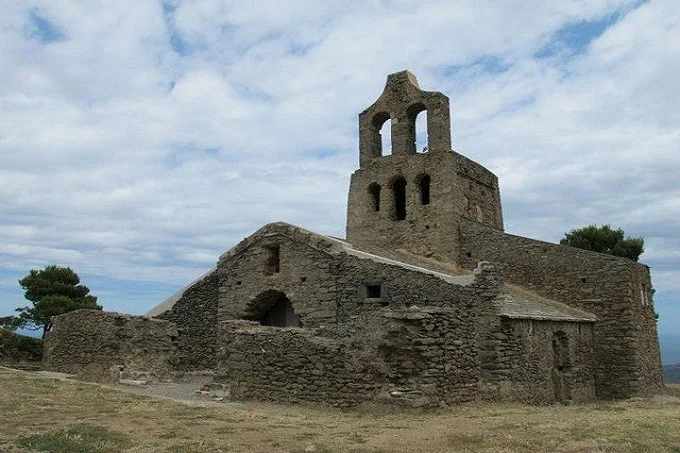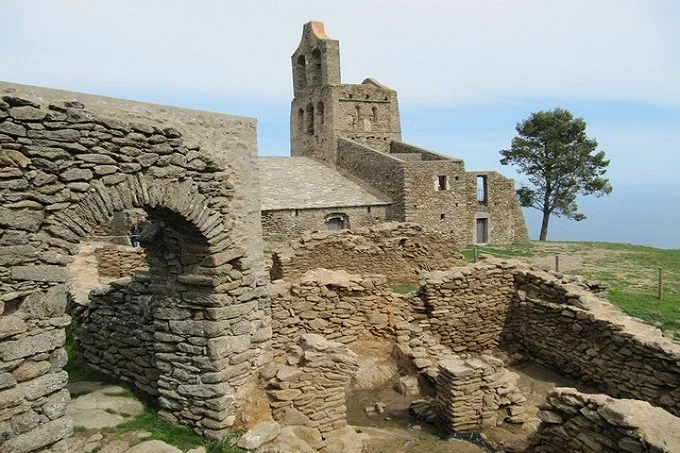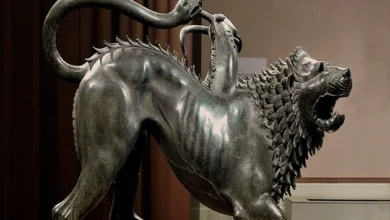Santa Cruz de Rhodes: Church that survived Black Plague and pirates

In northeastern Catalonia, Spain, Santa Cruz de Rhodes is an abandoned medieval chapel. Near the Sierra de Rodes mountain range, this chapel was formerly the center of a major community. Only a handful of the homes and public buildings have remained to this day, while the rest are in ruins. The village surrounding the church progressively deteriorated and was eventually demolished and pulled down throughout the years.
There are just a few ruins of this medieval city. There are a few abandoned homes, two towers, and the church of Santa Cruz de Rodes, the crown gem because it is an ancient village, all of the structures are mainly made of stone and wood.
The two towers at the town’s entrance have an obvious purpose: to keep an eye on those coming and to provide defense. There used to be an arched gate between the towers that functioned as the town’s formal entrance. An arch of wood and carved stone supported the huge wooden gate. The paved road that divided the town in two and led straight to the church may still be seen today.

Santa Cruz de Rodes was first referenced in a letter sent by Pope Benedict VI in 974, although we don’t know precisely when it was constructed. In the presence of envoys sent by Pope John XV, the church was dedicated in 1113.
With its holdings and population, Santa Cruz de Rodes was the most important and powerful church in all of northeastern Catalonia, according to the books of the priests who headed the church in the following years.
By the 14th century, the church had taken control of the region’s economy, with the biggest market in its territories. Because the land was fertile and more likely to be lucrative there, residents from the neighboring villages and small towns flocked to live on its property.
The closeness to the sea was also a significant benefit. Every boom, however, is followed by a downturn, and no one could foresee how the community would alter. In 1345, the town was devastated by the Great Plague, often known as the Black Death.
According to church records, 24 monks died of the plague in the same year. The town’s population was decreased to one-tenth of its previous level. Those who survived the illness faced continuous assaults by Mediterranean pirates on the city’s weakening defenses.
Santa Cruz de Rhodes was a remarkable example of a formerly prosperous and flourishing town that went bankrupt and declined.

The following information concerning the church was recorded by a priest and came from 1455. They mention that the church was staffed by three priests at the time, who received every possible assistance from the town.
The church and its membership suffered tremendously as a result of the difficult times. Santa Cruz de Rodez had ceased to provide parish duties by 1572 and was shortly abandoned. In addition, the town was empty. According to some historians, many of its residents took part in the invasion of Majorca and ultimately moved there, constructing homes in what became known as “Santa Creu.”
Santa Cruz de Rodes and its environs are currently included in Catalonia’s List of Architectural Heritage (Inventari del Patrimoni Arquitectonic de Catalunya), and numerous archaeological works and excavations have taken place there over the last 40 years. Even though the Catalan government protects the property, it is an open place with unrestricted access. There aren’t many visitors that come here, but those who have say it’s a wonderful spot to hike.




